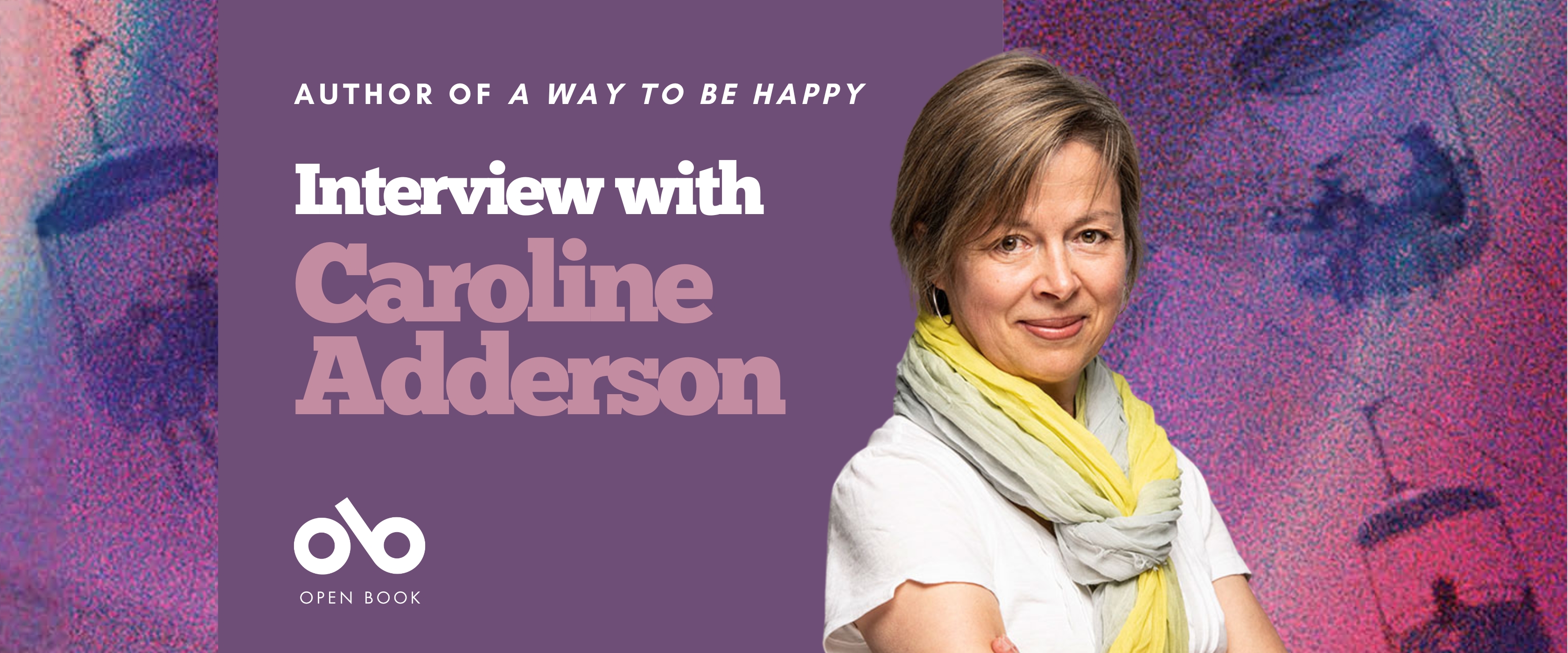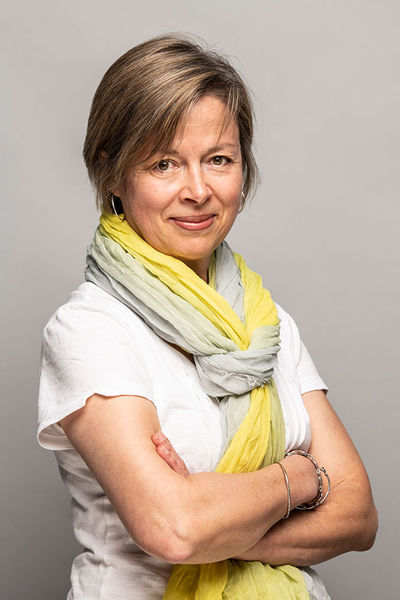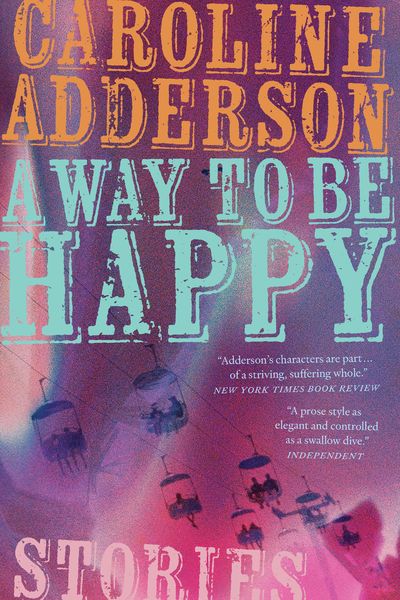An Eclectic and Gripping Cast of Characters Yearn for Happiness in Caroline Adderson's New Short Story Collection
Caroline Adderson is an author that has long been lauded amongst readers and literary critics, with a reputation for writing powerful novels, and some of the finest short fiction published in Canada and beyond.
For those who love short stories, they'll be thrilled to read the new collection by Adderson, which has recently been longlisted for the Giller Prize, and marks a return to her collaborations with fabled editor John Metcalf. This new collection, A Way to be Happy (Biblioasis), has a remarkable cast of characters that come to life through Adderson's stunning prose.
In these pages, you'll find addicts trying to rob high-end parties in an effort to fund their own recovery, a recently separated woman who received a life-changing visitation in a small northern town, a Russian hitman steeped in sublimated memories, and a group of woman in a nineteenth century asylum who band together to help a young girl escape. It's a collection that always ponders what it mean to find happiness, and profoundly looks at the ways that happiness is given by others or stumbled upon along the way.
We've got a fantastic Keep It Short Interview with the author to share with our readers today on Open Book!
Open Book:
How did you decide what stories to include in the collection? When were they written?
Caroline Adderson:
One story was orphaned from my 2006 collection Please to Meet You. Two others were previously published in magazines. The others were written over the last three years. That is, I sat at the computer and composed the many drafts that eventually became the final versions. In actuality, I puzzle out a story idea in my head for many years before my butt actually hits the chair.
OB:
What do the stories have in common? Do you see a link between them, either structurally or thematically?
CA:
Though they differ wildly in theme and structure, most of the stories contain an element of inter-textuality, a nod to pre-existing texts, some classic, some contemporary, some archival material, even a tabloid article. In the cases where the origin text is obvious and well-known, it layers the story with additional meanings and expands it beyond its limited word count. But these references also affect the writing itself, taking me to startling new places, including the lives of characters entirely unlike myself (murderers, for example, or the supposedly “insane.”) The stories became private technical experiments so I could keep growing in my craft. A writer is never really writing alone. You learn from everything you read and this is my way of honoring that reading.
OB:
Do you think your characters have anything in common with each other, from story to story?
Your CanLit News
Subscribe to Open Book’s newsletter to get local book events, literary content, writing tips, and more in your inbox
CA:
Can their dissimilarity be a point of commonality? A Russian hitman, the inmates of a hospital for the insane in 1908, a pimpled suburban teen smitten with a girl with three nipples? The only place these people would ever encounter each other would be in an improv skit. Yet they do share a common motivation, one we all share – a yearning to be happy.
OB:
What do you enjoy most about writing short fiction? What is the toughest part?
CA:
I love the focus on the sentence. Crafting them is also the toughest part.
OB:
Did you do any specific research for any of your stories? Tell us a bit about that process.
CA:
During an online search, I happened upon three academic papers detailing the experiences of female patients at what was then called the Provincial Hospital for the Insane from 1905 to 1915. While some of the women were indeed mentally ill, many were simply recovering from trauma at a time when life experience was discounted as a contributor to mental health and “insanity” was believed to be congenital. There was no counselling or treatment. Doing the work of running the hospital was the therapy. In other words, it was a kind of workhouse. The lives of these women so moved me I decided to honour them in fiction. To do that, I needed to read the actual records, which are housed at the British Columbia Archives in Victoria and require court approval to access. Once a judge approved my request, I travelled to Victoria and spent a week reading the files and getting to know these long-ago women.
OB:
What was the strangest or most memorable moment or experience during the writing process for you?
CA:
Researching “From the Archives of the Hospital for the Insane” was strange and memorable. The files, which dated from 1908, contained not just intake forms and clinical notes, but correspondence: letters from family begging for news of their loved ones, written in their own hand, sometimes in broken English. Or they would be reporting back on a discharged patient, a requirement for their release. There were deportation orders, letters from Child Protection Services asking when a patient would recover as she’d left behind three unprovided for children. There was realia too: a snippet of handmade lace, a luggage tag. Most heartbreaking was opening folders and finding a black and white photograph of the patient. I quickly realized this meant that the patient had died at the hospital and that the pages I was about to read would reveal the grim circumstances.
OB:
Who did you dedicate your collection to, and why?
CA:
John Metcalf. John edited my first story collection, Bad Imaginings, which launched my writing career in 1993. He’s been a moral and artistic support to me ever since, though I moved on to other publishers. For a number of years, he’s been badgering me to do another book of stories with him. He’s 88 now. I had a manuscript. Full circle.
_____________________________________________________
Caroline Adderson is the author of five novels (A Russian Sister, Ellen in Pieces, The Sky Is Falling, Sitting Practice, and A History of Forgetting), two previous collections of short stories (Pleased to Meet You and Bad Imaginings), as well as many books for young readers. Her award nominations include the Sunday Times EFG Private Bank Short Story Award, the International IMPAC Dublin Literary Award, two Commonwealth Writers’ Prizes, the Governor General’s Literary Award, the Rogers’ Trust Fiction Prize, and the Scotiabank Giller Prize longlist. The recipient of three BC Book Prizes, three CBC Literary Awards, and the Marian Engel Award for mid-career achievement, Caroline lives and writes in Vancouver.







